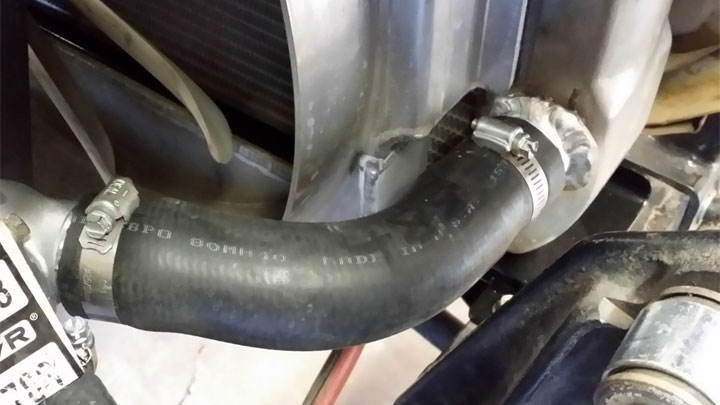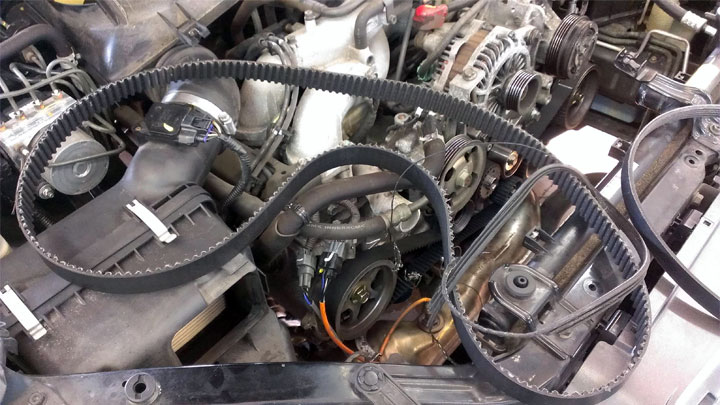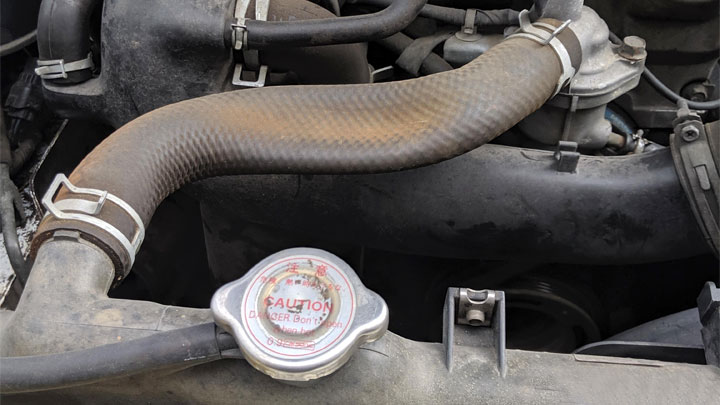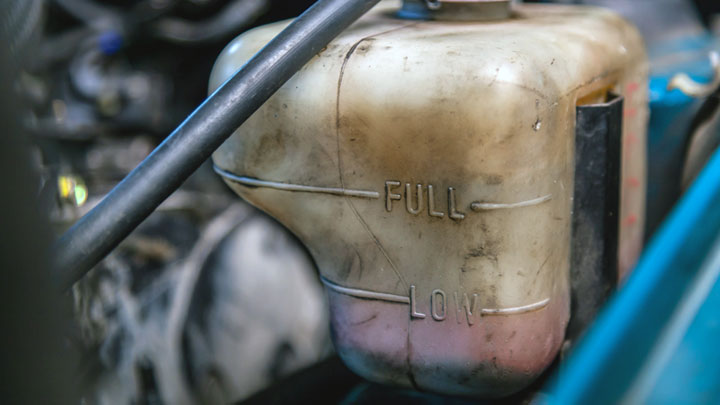7 Causes of a Cold Lower Radiator Hose
Cooling system troubles? Take note of your lower radiator hose. When coolant can’t flow, that hose stays cold. Normally the hose warms up after a few miles, but if it’s still cold, coolant isn’t transferring engine heat outside and you can expect overheating.
Keep reading as we look at what can cause a lower radiator hose to stay cold and answer some common questions regarding this particular part.

What is the Purpose of a Lower Radiator Hose?
The radiator’s primary function is to transfer the heat generated by the engine to the outside air. To do this, the engine (when running) circulates its coolant through the radiator.
Hot coolant from the engine enters the radiator via the upper hose. The purpose of the lower hose is to convey the cooled antifreeze back to the engine.
Reasons for a Cold Lower Radiator Hose
In all cases where a cold lower hose is evident, the antifreeze will for some reason be either partially or completely restricted from circulating through the radiator. Each of the following cooling system problems could cause such a restriction of flow:
#1 – Inoperative Thermostat

The thermostat fails to open or will only partially open when the engine gets warm. Coolant cannot properly circulate if the thermostat will not fully open. Thermostat replacement will be required.
#2 – Failed Water Pump
Several failure modes for the water pump can result in reduced or zero antifreeze flow through the pump. Water pump replacement will be required.
#3 – Loose or Slipping Water Pump Belt

The water pump will not run at full speed. Thus its flow rate is reduced. Check and replace all worn belts. If the belts are not worn, adjust them for proper tension.
#4 – Clogged Radiator
The passages in a radiator are quite small and with time, can become plugged by sludge in the antifreeze. A cool lower radiator hose is a common symptom of a clogged or faulty radiator.
The radiator may require replacement but in some cases, it can be drained, flushed and new coolant installed.
Note: Cooling system sludge buildup can be mitigated by periodic flushing of the complete cooling system and installing new coolant. See your owner’s manual for requirements in this regard.
#5 – Collapsed or Clogged Hose(s)

Either or both radiator hoses may be collapsing during engine operation or may be clogged. Diagnosing the source of this problem will be required.
Hoses blocked with sludge will necessitate a complete cooling system drain, flush and new coolant. Old degraded hoses will need to be replaced.
#6 – Excess Air in the Cooling System
This condition can allow an air pocket to form at the water pump such that it will not circulate the coolant. Excess air may be present due to improper system bleeding after new coolant has been installed. Or there may have been a loss of coolant due to a leak.
#7 – Low Coolant Level

Low coolant can permit an air pocket to form at the water pump such that it will not circulate the coolant. Insufficient coolant will have been caused by a leak often due to a faulty radiator cap or crack in the overflow tank.
The leak must be found and corrected and the coolant level restored.
Related: Loosing Coolant But No Visible Leaks?
FAQs
What Does the Lower Radiator Hose Connect To?

Of course, one end of the lower hose is connected to the radiator. The other end is routed back to the water pump.
The hose may connect directly to this pump or it may connect to a coolant passage on the engine that will carry the coolant to the inlet of the water pump.
Why is the Lower Hose Larger than the Upper Hose?

As mentioned above, the lower hose conveys the antifreeze to the inlet of the water pump. This pump is a centrifugal type. This type of pump requires positive pressure at its inlet to function properly.
At high flow rates, this pressure could be excessively reduced due to the flow restriction that might occur with a small diameter lower hose. Hence car manufacturers furnish a large hose to minimize the pressure drop at high flow rates. This helps ensure the pump will function properly.
Is it Normal for the Lower Radiator Hose to be Colder than the Top Hose?
Yes, it’s completely normal for the lower radiator hose to be colder than the top one. But “colder” in this case simply means that the coolant within the hose is warm instead of hot.
The top radiator hose transports hot coolant from the engine to the radiator, while the lower radiator hose carries the cooled down coolant back to the engine. This temperature difference is exactly how a car’s cooling system is supposed to function.
What’s the Typical Temperature Difference Between Top and Bottom Radiator Hoses?
The temperature difference between the top and bottom radiator hoses can vary depending on your vehicle and the operating conditions. Typically, the top radiator hose will be around 20 to 30 degrees Fahrenheit hotter than the lower one.
This means that the radiator is efficiently dissipating the heat from the coolant before it circulates back to the engine.
How Does a Cold Lower Radiator Hose Affect the Car’s Heating?
A cold lower radiator hose can be an indicator of a problem with your car’s cooling system. If the lower radiator hose is too cold, it may signify issues like those mentioned above. These problems can lead to ineffective cooling of the engine or insufficient heat for the car’s heating system.
- DIY Car Repair Tools – Floor Jack and Jack Stands - Dec 12, 2023
- DIY Car Repair Tools – Socket (Ratchet) Wrench - Nov 9, 2023
- DIY Car Repair Tools – Torque Wrench - Apr 20, 2023

that has to be the best explained procedure i have read on the web…just want to say thanks.